
The Atelidae are one of the five families of New World monkeys now recognised. It was formerly included in the family Cebidae. Atelids are generally larger monkeys; the family includes the howler, spider, woolly, and woolly spider monkeys. They are found throughout the forested regions of Central and South America, from Mexico to northern Argentina.
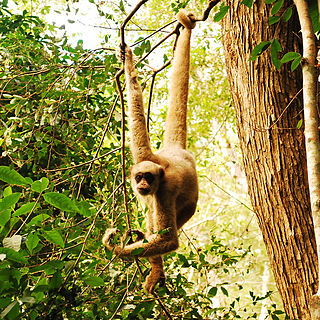
The muriquis, also known as woolly spider monkeys, are the monkeys of the genus Brachyteles. They are closely related to both the spider monkeys and the woolly monkeys. The two species are the southern and northern muriquis. They are the two largest species of New World monkeys, and the northern species is one of the most endangered of all the world's monkeys.

The Atelinae are a subfamily of New World monkeys in the family Atelidae, and includes the various spider and woolly monkeys. The primary distinguishing feature of the atelines is their long prehensile tails, which can support their entire body weight.
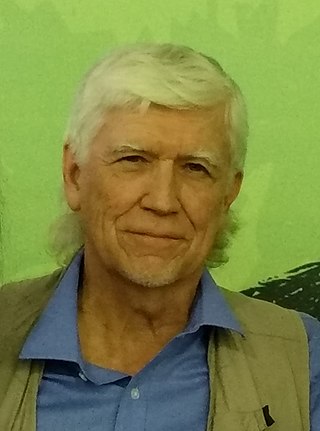
Russell Alan Mittermeier is a primatologist and herpetologist. He has written several books for both popular and scientist audiences, and has authored more than 300 scientific papers.
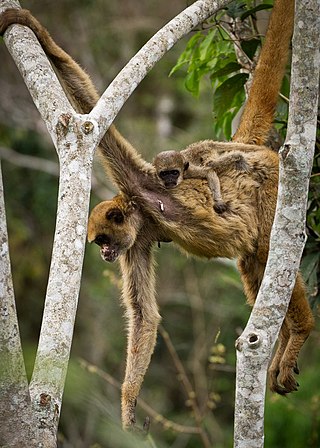
The northern muriqui is one of two species of muriqui. They are also known as woolly spider monkey because they exhibit the woollen pelt of woolly monkeys and the long prehensile tail of spider monkeys. Muriquis are the largest extant New World monkeys. They can reach 4.3 feet or 1.3 metres long and weight up to 7 to 10 kilograms. The northern muriqui is a critically endangered species that is unusual among primates in that they display egalitarian tendencies in their social relationships. This species is endemic to the Atlantic Forest region of Brazilian states of Rio de Janeiro, Espírito Santo, Minas Gerais and Bahia. Their diets, travel patterns and reproductive cycles are seasonally determined. The size of each group can fluctuate as females will move between groups of monkeys.

The southern muriqui is a muriqui species endemic to Brazil.
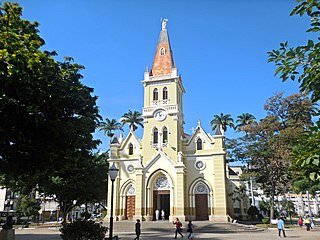
Caratinga is a municipality in eastern Minas Gerais state, Brazil. The population in 2020 was 92,603 inhabitants and the total area of the municipality was 1,251 km2. The elevation is 578 meters above sea level, with maximum elevation of 1,516 m in the Serra do Rio Preto and 330 m at the mouth of the Córrego Boachá.

Washington Stecanela Cerqueira, or simply Washington, is a Brazilian football pundit, coach, and former player who played as a striker.
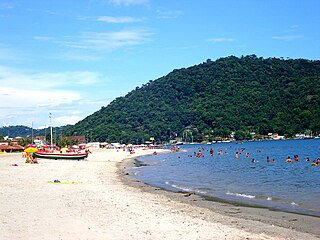
Mangaratiba is a municipality located in the Brazilian state of Rio de Janeiro. Its population is 45,220 (2020) and its area is 352 km2.

The Manhuaçu River is a river of Minas Gerais state in southeastern Brazil.
Solimoea acrensis is a prehistoric ateline monkey from the Late Miocene Solimões Formation of Brazil. It is the only known species of the genus Solimoea.

Luiz Guilherme da Conceição Silva, commonly known as Muriqui, is a Brazilian professional footballer who currently plays for Remo.

Muriqui is a district of the municipality of Mangaratiba, located within the Greater Rio de Janeiro, Brazil. It is part of the Green Coast. Highway BR-101 passes through the district.

Humberto Cavalcanti de Albuquerque Teixeira was a Brazilian lawyer, politician, musician, and composer, mostly known for his partnership with musician Luiz Gonzaga. Together, they wrote one of the most important songs of their era, Asa Branca, in 1947. Teixeira is recognized as a specialist in baião as well as "master of costumes and popular North-Eastern trends."
João Francisco Nóbrega da Silva is a former Brazilian football manager.
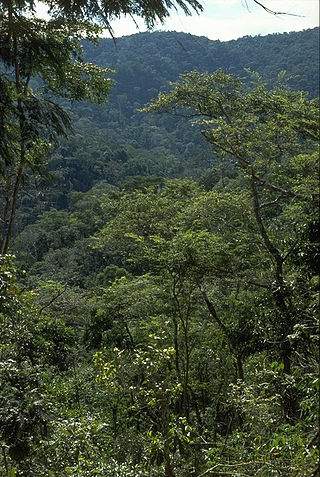
Feliciano Miguel Abdala Private Natural Heritage Reserve, formerly the Fazenda Montes Claros and then the Caratinga Biological Station, is a privately owned sustainable-use protected area in the state of Minas Gerais, Brazil. It contains an example of Atlantic Forest biome. The reserve is home to rare buffy-headed marmosets and to one of the last wild populations of northern muriqui woolly spider monkeys.
The Nascentes do Paranapanema State Park (Portuguese: Parque Estadual Nascentes do Paranapanema is a state park in the state of São Paulo, Brazil. It protects part of the largest remnant of Atlantic Forest in Brazil.

Karen B. Strier is a primatologist. She is a Vilas Research Professor and Irven DeVore professor of Anthropology at the University of Wisconsin–Madison, and co-editor of Annual Review of Anthropology. The main subject of her research is the Northern Muriqui, a type of spider monkey found in Brazil.
Álvaro Coutinho Aguirre was a Brazilian agronomist, zoologist and naturalist. Aguirre created the first reserve park for wild animals in Brazil, the Sooretama Biological Reserve at the state of Espírito Santo (the first protected area created in Brazil was in 1937. He dedicated his life to the preservation of the Brazilian flora and fauna, especially the Atlantic Forest and the biggest primate of the Americas, the Muriqui. During the 1960s, he undertook many expeditions to study the life and habits of the Muriqui and its conditions at the time. The results showed a considerable reduction of the groups of the animals, due to deforestation and lack of preservation of their habitat.














